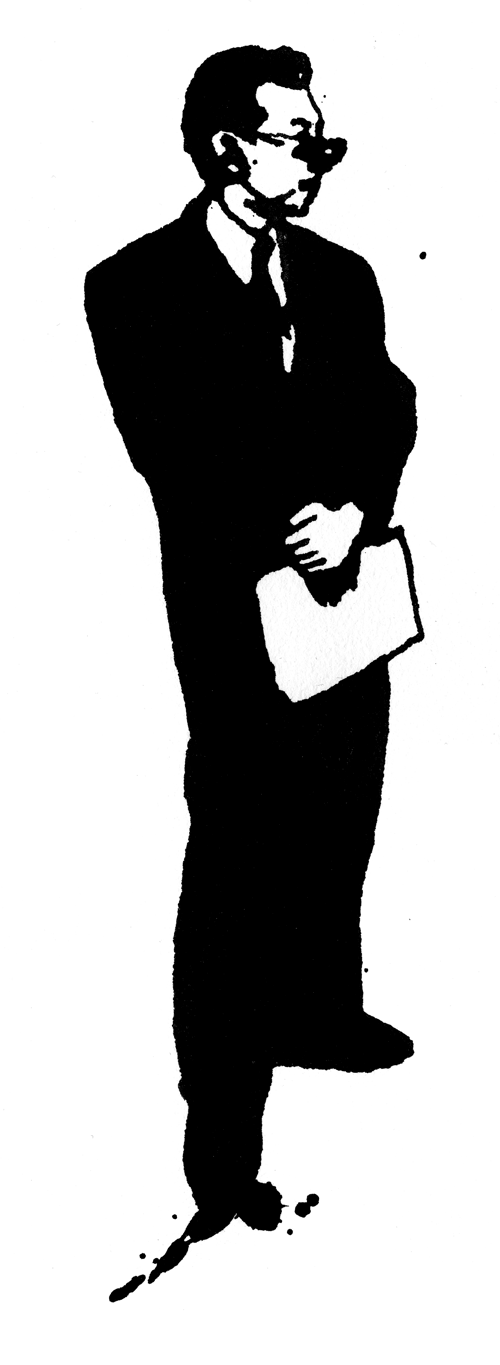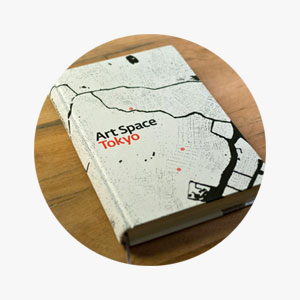Ginza:
Tradition, Inspiration and Louis Vuitton
An interview with Hozu Yamamoto
Tokyo Gallery + BTAP, Ginza

HOZU YAMAMOTO, co-director
Born in Tokyo in 1948. After graduating from the Department of Architecture in the Faculty of Art and Design at Musashino Art University, he worked as an aide to a member of the House of Representatives. He started working at Tokyo Gallery in 1979. As well as handling Asian contemporary art, he is involved in projects that look at the application of art in society and town planning.
How did Ginza develop into being the center of the Tokyo contemporary art world?
HYThe Shiseido Gallery was the first place to show paintings in Ginza, and that was the starting point for many other galleries to open in the area. At that time, the Nihonbashi area was the center for galleries handling classical art and antiques, and then with the establishment of galleries in Ginza like Galerie Nichido and Yayoi Gallery, Ginza became known as a part of town full of galleries that handled yoga painting.
What was your father’s background and what inspired him to set up a contemporary art gallery?
HYMy father had studied classical art at a gallery called Heisando. Although it was a gallery specializing in classical art, he started to show interest in handling some yoga work. That was met with some resistance from the owner, so my father decided to set up his own place. In 1948, he opened the Sukibayashi Gallery, which he ran for two years, and then he renamed it Tokyo Gallery.
For the first few years he was selling yoga works, but when he visited London and Paris, he discovered the works of the Informel artists and the Abstract Expressionists. He realized that postwar art was about abstraction and after returning to Tokyo he showed the work of a lot of Western contemporary artists for the first time in Japan.
How did people react to your father’s introduction of contemporary art to Tokyo?
HYJust as China is now, Japan back then was in the midst of an incredible period of growth, encompassing the 1964 Tokyo Olympics and Expo ’70 in Osaka.1 During this time a lot of people at the managerial level of the manufacturing industries took an interest in abstract art and started to buy it. So the number of galleries in Ginza increased in tandem with the economy.
Another aspect is that few Japanese art schools had professors teaching contemporary art at that time. The teachers at the Tokyo National University of Fine Arts and Music had all studied in Paris, so they were primarily teaching figurative painting of the Impressionist style seen in works by Seiki Kuroda or Tsuguji Fujita. But when my father opened Tokyo Gallery and started showing abstract works, it captivated the young people’s imagination and influenced them.
In the late 1960s and early 1970s, the Mono-ha group of artists was a pioneering force in Japanese contemporary art history. How did Tokyo Gallery come to be involved with them?
HYDuring the 1960s, some university professors of my father’s generation were influenced by the same foreign artists in the same way that my father had been, and they were teaching their students to look at abstraction in order to generate new ideas. My father already knew the artist Yoshihige Saito, who was one of this generation that was exploring abstraction. He taught the Mono-ha artists at Tama Art University and, as a result, a lot of them came to see exhibitions at Tokyo Gallery.
Until the Mono-ha artists appeared, Japanese artists essentially got their influence from foreign artists and made their work through a process of imitation. The Mono-ha artists were the first to create work in a cultural context unconcerned with that of the West. Lee Ufan had been studying traditional painting in Seoul and then came to Tokyo to study philosophy. He met Nobuo Sekine at the very time he was thinking that a new art form needed to be created. He was deeply moved by Sekine’s work and their mutual influence on each other gave birth to a new form of art.
How has Ginza changed in the time that you have been working here?
HYUnfortunately, young people hardly come here any more. I remember that when I was young and my father was running the gallery, a lot of people my age would come here, listen to what people older than them had to say and be inspired to create something new. In that sense, the gallery was a place for creation. In the 1970s, all the art schools started to move out into the suburbs. A lot of students are based out in places in West Tokyo like Kichijoji, and when they come into central Tokyo, they only go as far as Shinjuku or Shibuya, not Ginza.
More broadly speaking, this area used to be overwhelmingly about manufacturers and craftsman working here, but that’s not the case anymore. Ginza has become more and more about luxury goods being imported from wherever they were made and sold in chain outlets, so this neighborhood has lost a lot of its power to inspire people’s imagination. Ginza is now flooded with people fixated on money, and socially it’s not very diverse as a result. This area has lost a lot of its charm.
Given that a lot of galleries are leaving Ginza and moving to other areas of the city, what keeps Tokyo Gallery here?
HYArt thrives on social connections. For example, when people see a Louis Vuitton bag, they know exactly what it stands for, and they can buy it without the need for explanation. But it’s hard for people to buy an artwork without talking about it first. Often it’s the communication that my brother and I have with our clients that encourages them to buy.
With all the social connections that we have cultivated in Ginza, if we were to leave we would have to start all over again. Young galleries don’t have these pre-established connections in Ginza, and of course it’s very difficult to establish yourself in an area where the rents are so high, so they can cultivate relationships from scratch wherever they like. And yet at the same time, it’s hard for them to cultivate these relationships by themselves, so they end up grouping together in the same buildings, like the galleries in the Sagacho Exhibit Space, or more recently the Imoaraizaka gallery building or the Kiyosumi-Shirakawa gallery building.
Lastly, with so many good restaurants here, this neighborhood is also really suited to inviting our clients out to lunch or dinner after a meeting. You need good places to eat if you’re to cultivate ongoing relationships in an area.
What do you think the future is for Ginza? How can it preserve its connections with contemporary art?
HYAt the moment, I’m doing my best to work toward making this consumer neighborhood into a creative neighborhood. A creative town has a lot of talented people gathering together in it. In every city, museums are being set up to preserve the country’s legacy and offer people a source of inspiration. I’m working to cultivate places like that in Ginza.
I’m currently collaborating with a company to organize an international photography biennale here in Ginza. Ginza doesn’t have any large venue like the Pompidou Center in Paris, so I’m looking at how to borrow a number of companies’ spaces to make this kind of event happen.
I’m also organizing a window-display competition. The idea is to give an opportunity to the best students from six art universities to do the showroom design for ten companies in Ginza. This would give young people the opportunity to show in Ginza, and it would inject some new vitality into each company’s image. It would be different from the slick, professionally produced window displays you usually see and would offer something fresh with a bit more imagination.
Do all the different corporations that sponsor art in and around Ginza cooperate with each other much?
HYNot really. They tend to keep to themselves. The Marunouchi area is run by the Mitsubishi people and Nihonbashi is run by Mitsui people. Ginza isn’t particularly dominated by any one company, but each of the major building owners have their influence. Japan is a bit tribal like that, which renders it hard to make things happen. But people in Ginza are beginning to realize that this is not the right way to work. Borderlessness has become the global standard of business practice now, and with spaces in both Ginza and Beijing, Tokyo Gallery + BTAP has to think in terms of a more international scope.
What does Tokyo Gallery + BTAP aim to achieve in its relations with the surrounding neighborhood and beyond?
HYI would like us to harness the talent of the people who are connected with us and feed it back into the local area. We have Korean and Chinese artists whose work has an impact on the people who come here, and it in turn may inspire people to go visit those countries. It’s this gallery’s job to cultivate a close relationship of artistic exchange between Japan, Korea and China.
Noted
- Held from March 15 to September 13, 1970 under the theme “Progress and Harmony for Mankind,” Expo ’70 was Japan’s first World’s Fair.↩

